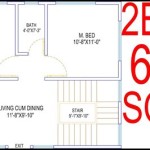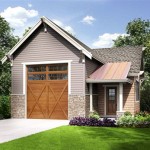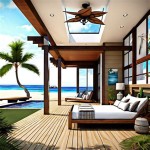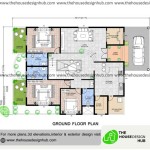Plans to build bluebird houses involve meticulous instructions and blueprints that guide individuals in constructing nest boxes specifically designed to attract and provide shelter for Eastern Bluebirds (Sialia sialis).
These plans typically include detailed measurements, materials lists, and step-by-step instructions, ensuring the construction of durable and effective nesting sites. Bluebird houses provide vital support for these birds by offering protection from predators, harsh weather conditions, and nesting competition, fostering their population growth and overall well-being.
In the following sections, we will delve deeper into the significance of these plans, highlighting the key components and considerations involved in building and installing bluebird houses to maximize their effectiveness and benefit to the species.
When crafting plans to build bluebird houses, several key points should be considered to ensure their effectiveness and suitability for the intended inhabitants.
- Proper Dimensions
- Suitable Entrance Hole
- Ventilation and Drainage
- Predator Protection
- Durable Materials
- Appropriate Location
- Regular Monitoring
- Maintenance and Cleaning
By adhering to these guidelines, individuals can create nesting sites that provide optimal conditions for bluebirds, contributing to their successful breeding and overall well-being.
Proper Dimensions
The dimensions of a bluebird house are crucial for the comfort and safety of its avian occupants. Adhering to specific measurements ensures ample space for nesting and movement while deterring larger birds or predators from entering the box.
- Interior Floor Space: The ideal floor space measures approximately 4 inches by 4 inches, providing sufficient room for the nest and incubating birds.
- Nest Box Height: The height of the nest box should be around 6 inches, allowing enough vertical space for the birds to move comfortably and tend to their young.
- Entrance Hole Diameter: The entrance hole should be precisely 1.5 inches in diameter. This specific size accommodates Eastern Bluebirds while excluding larger birds that may pose a threat to the nesting pair.
- Depth of Entrance Hole: The depth of the entrance hole should not exceed 1.5 inches, preventing predators from reaching inside the nest box.
Maintaining these dimensions ensures a suitable nesting environment that meets the specific needs of Eastern Bluebirds, promoting their successful breeding and minimizing potential risks or disturbances.
Suitable Entrance Hole
The entrance hole of a bluebird house plays a critical role in the safety and accessibility of the nest box. Its specific design and dimensions are crucial for attracting Eastern Bluebirds while deterring unwanted guests and potential predators.
Precise Diameter: The entrance hole should measure exactly 1.5 inches in diameter. This specific size allows Eastern Bluebirds, which have an average head width of 1 inch, to enter and exit the box comfortably. It also effectively prevents larger birds, such as House Sparrows or European Starlings, from entering the nest box, as their heads are typically wider than 1.5 inches.
Appropriate Depth: The depth of the entrance hole should not exceed 1.5 inches. This prevents predators, such as raccoons or snakes, from reaching inside the nest box and harming the nesting birds or eggs. A deeper entrance hole can also make it easier for predators to enlarge the hole, compromising the integrity of the nest box.
Rounded Edges: The edges of the entrance hole should be smooth and rounded, without any sharp or protruding edges. This prevents injuries to the birds as they enter and exit the nest box, particularly during the breeding season when they may be carrying nesting materials or feeding their young.
Proper Placement: The entrance hole should be placed in the center of one of the side panels, approximately 1 inch below the top of the nest box. This placement provides easy access for the bluebirds while minimizing exposure to predators and harsh weather conditions.
Ventilation and Drainage
Proper ventilation and drainage are essential elements in the design of bluebird houses to ensure the health and well-being of the nesting birds. Without adequate airflow and drainage, the nest box can become damp and humid, creating an environment conducive to the growth of mold and bacteria. This can lead to respiratory problems, disease, and even death for the chicks and adult birds.
- Ventilation Holes: Ventilation holes are small openings located near the top of the nest box, on opposite sides or corners. These holes allow for the circulation of fresh air, preventing the buildup of stale air and moisture inside the box. They should be approximately 1/2 inch in diameter and covered with mesh or hardware cloth to prevent predators from entering.
- Drainage Holes: Drainage holes are small holes located in the floor of the nest box. They allow excess water to drain out, preventing the nest from becoming waterlogged. These holes should be approximately 1/4 inch in diameter and positioned in the corners of the floor to facilitate drainage.
- Sloped Roof: A sloped roof helps direct rainwater away from the entrance hole and prevents water from seeping into the nest box. The roof should have an overhang of at least 2 inches to provide additional protection from the elements.
- Avoidance of Pressure-Treated Wood: Pressure-treated wood contains chemicals that can be harmful to birds. Therefore, it should not be used in the construction of bluebird houses.
By incorporating proper ventilation and drainage into the design of bluebird houses, individuals can create a healthier and more suitable nesting environment for these birds, enhancing their chances of successful breeding and raising healthy offspring.
Predator Protection
Protecting bluebird houses from predators is crucial for the safety and survival of nesting birds and their young. Several design features and placement considerations can help deter or prevent predators from accessing and harming the nest box.
- Sturdy Construction: The nest box should be constructed using durable materials such as cedar or cypress, which are naturally resistant to rot and decay. The walls should be at least 1/2 inch thick to withstand potential predator attacks.
- Reduced Perch Space: Avoid adding perches or ledges around the entrance hole, as these can provide a foothold for predators to reach the nest. A smooth, sloped surface around the entrance hole makes it difficult for predators to grip and climb.
- Predator Guards: Metal predator guards can be installed around the entrance hole or on the mounting pole to prevent predators from climbing up and reaching the nest box. These guards should be made of durable materials such as galvanized steel or aluminum.
- Slippery Poles: Mounting the nest box on a slippery pole, such as a metal or PVC pipe, makes it difficult for predators to climb and access the box. Applying a thin layer of petroleum jelly or cooking oil to the pole can further enhance its slipperiness.
Proper Placement: The placement of the nest box can also play a role in predator protection. Here are some guidelines to consider:
- Avoid Open Areas: Nest boxes should not be placed in open areas where they are easily accessible to predators. Choose a location that provides some natural cover, such as trees, shrubs, or tall grasses.
- Height: The nest box should be mounted at a height of at least 5 feet above the ground to deter ground predators such as cats and raccoons. However, ensure the pole is stable and sturdy to prevent the box from swaying or falling.
- Distance from Trees: Avoid placing the nest box too close to trees or branches, as predators can use these as a bridge to reach the box. Maintain a distance of at least 10 feet from any potential perching spots.
- Clear Surroundings: Keep the area around the nest box clear of debris, overgrown vegetation, or any objects that could provide hiding spots for predators.
By implementing these predator protection measures, individuals can significantly reduce the risk of predation and create a safer nesting environment for bluebirds.
Durable Materials
When constructing bluebird houses, selecting durable materials is essential to ensure the longevity and effectiveness of the nesting site. The materials used should be able to withstand various environmental conditions, including exposure to sunlight, moisture, and potential predator damage.
- Cedar: Cedar is a naturally rot-resistant and durable wood, making it an excellent choice for building bluebird houses. Its natural oils provide protection against moisture, insects, and decay, ensuring the longevity of the nest box.
- Cypress: Cypress is another rot-resistant and durable wood suitable for bluebird house construction. It is known for its strength and resistance to warping, making it a reliable material for withstanding harsh weather conditions.
- Pine: Pine is a commonly used wood for building bluebird houses due to its affordability and availability. However, it is important to choose pressure-treated pine to enhance its resistance to rot and decay. Ensure the pressure-treated pine is labeled for outdoor use and free of harmful chemicals.
- Recycled Plastic: Recycled plastic lumber is a sustainable and durable option for building bluebird houses. It is resistant to rot, moisture, and insects, making it a low-maintenance and long-lasting choice. Additionally, using recycled plastic helps reduce environmental waste.
Using durable materials in the construction of bluebird houses provides several benefits. It ensures the nest box can withstand the elements and last for multiple breeding seasons, providing a reliable nesting site for bluebirds. Durable materials also help protect the nest and its occupants from potential damage caused by predators or other environmental factors.
Appropriate Location
Selecting an appropriate location for a bluebird house is crucial for the success and safety of nesting bluebirds. Careful consideration should be given to factors such as habitat suitability, predator avoidance, and accessibility for monitoring and maintenance.
- Habitat Suitability: Bluebirds prefer open areas with scattered trees or shrubs, where they can forage for insects and find suitable nesting sites. Avoid placing the nest box in dense forests or areas with tall grass, as these can hinder the birds’ ability to spot predators and navigate to and from the box.
Additionally, bluebirds are territorial birds, so it is important to space nest boxes at least 300 feet apart to minimize competition and territorial disputes.
- Predator Avoidance: Predators such as cats, snakes, and raccoons pose a significant threat to bluebirds and their nests. To reduce the risk of predation, place the nest box in an area with minimal predator activity. Avoid areas with dense vegetation or structures that provide hiding spots for predators. Consider placing the nest box on a metal or PVC pole, which makes it difficult for predators to climb.
- Accessibility for Monitoring and Maintenance: Regular monitoring and maintenance are essential to ensure the nest box remains in good condition and provides a suitable nesting environment for bluebirds. Choose a location that is easily accessible for inspection, cleaning, and any necessary repairs. Avoid placing the nest box too high or in areas where it is difficult to reach.
- Additional Considerations:
– Sunlight Exposure: Bluebirds prefer nest boxes that receive some morning sunlight, as this helps keep the nest warm and dry. Avoid placing the nest box in areas that are constantly shaded or exposed to excessive heat.
– Wind Protection: Choose a location that provides some protection from strong winds, as these can damage the nest box or make it uncomfortable for nesting birds.
– Water Source: Having a nearby water source, such as a birdbath or pond, can be beneficial for bluebirds, especially during hot weather.
By carefully considering these factors and selecting an appropriate location, you can increase the chances of attracting bluebirds to your nest box and providing them with a safe and successful nesting environment.
Regular Monitoring
Regular monitoring of bluebird houses is essential to ensure the health and safety of nesting birds and their young. It allows you to identify and address any potential issues early on, increasing the chances of a successful nesting season. Here are key aspects of regular monitoring:
Frequency of Monitoring: During the nesting season, it is recommended to monitor nest boxes at least once a week. This frequency allows you to track the progress of nesting and identify any potential problems promptly.
What to Observe: During monitoring, pay attention to the following:
– Activity around the nest box: Observe the level of activity around the nest box. Regular visits by adult bluebirds indicate successful nesting. A lack of activity may suggest a failed nesting attempt or the abandonment of the nest.
– Condition of the nest box: Check the overall condition of the nest box. Look for any damage, such as cracks, holes, or loose parts. Promptly repair any damage to ensure the safety of the nesting birds.
– Signs of predators: Inspect the area around the nest box for any signs of predators, such as footprints, droppings, or feathers. If you suspect predator activity, take appropriate measures to deter predators and protect the nest.
Cleaning and Maintenance: During monitoring, take the opportunity to clean the nest box if necessary. Remove any debris, old nesting material, or droppings to maintain a clean and healthy environment for the birds. Avoid excessive cleaning, as it can disturb the nesting birds.
Regular monitoring of bluebird houses is crucial for the well-being of nesting birds. By observing nest activity, checking the condition of the nest box, and addressing any potential issues, you can help ensure a successful nesting season for these beautiful and beneficial birds.
Maintenance and Cleaning
Regular maintenance and cleaning of bluebird houses are essential to ensure their longevity and effectiveness as nesting sites for these beautiful birds. Here are key aspects to consider:
Annual Inspection and Repairs
Once a year, typically after the nesting season has ended, conduct a thorough inspection of the bluebird house. Check for any damage, such as cracks, holes, or loose parts. Pay particular attention to the entrance hole, as this area is prone to wear and tear from the birds’. Promptly repair any damage to maintain the structural integrity of the nest box and protect the nesting birds from the elements.
Cleaning the Nest Box
After each nesting season, or more frequently if necessary, clean the nest box to remove old nesting material, debris, and droppings. Use a soft brush or cloth to gently remove any loose material. Avoid using harsh chemicals or detergents, as they can leave behind harmful residues that could deter bluebirds from using the nest box. Allow the nest box to dry thoroughly before placing it back in its original location.
Preventing Parasites and Diseases
To prevent the spread of parasites and diseases, avoid using nest boxes that have been previously occupied by other bird species, especially those known to carry diseases harmful to bluebirds. If you must reuse a nest box, thoroughly clean and disinfect it before placing it back in use. You can use a mild bleach solution (one part bleach to nine parts water) to disinfect the nest box. Rinse the nest box thoroughly with clean water and allow it to dry completely before placing it back in its original location.
Additional Tips for Maintenance and Cleaning
To further enhance the effectiveness and longevity of your bluebird houses, consider the following additional tips:
– Use untreated wood: Avoid using pressure-treated wood for building bluebird houses, as the chemicals used in the treatment process can be harmful to birds. Opt for natural, untreated wood such as cedar, cypress, or pine.
– Provide drainage holes: Drill small drainage holes in the floor of the nest box to allow excess water to drain out, preventing the nest from becoming waterlogged and creating a damp environment that can lead to mold and bacteria growth.
– Consider using a predator guard: Installing a predator guard around the entrance hole can help deter predators such as raccoons and snakes from reaching the nest and harming the birds or their young.
By following these maintenance and cleaning guidelines, you can help ensure that your bluebird houses remain in good condition and continue to provide safe and suitable nesting sites for these beautiful and beneficial birds.










Related Posts








